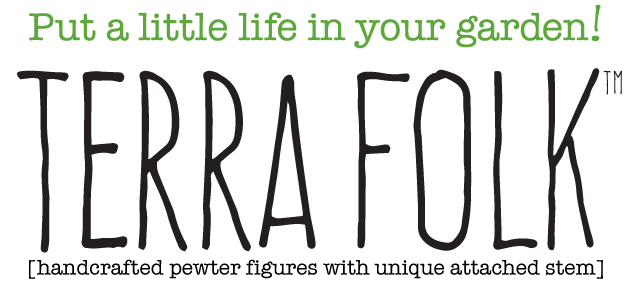terrarium diy
Terrariums have been around since the 1800s. They were a way of transporting rare exotic plants from around the world to display in England. I specifically remember them in the 70s, along with macrame plant hangers and crocheted granny square vests. Now they are back and gaining increased popularity. Today's terrariums look very different from the kitschy aquarium-like models of the 70s. They can be expressive and playful, serene and contemplative, a miniature world for us to create and our minds to wander.
Need some inspiration? Go on Pinterest or to your local nursery to find all kinds of creative ideas. Maybe you would like to invite a few friends over, open your favorite bottle of wine and spend an evening creating your own whimsical miniature worlds or making a special gift for someone; or quite possibly, you are about to become a crazy obsessed terrarium maker like me. Either way, below you will find the info you need to create a successful terrarium.
You are ready to make a terrarium. You have gone online and created your special Terra Folk and you are ready to roll! Here's what you need to know. Terrariums can be open or closed. They vary from jars and vases, to lamps and hanging globes. Before making a terrarium, consider where it will live in your home. You want indirect light, the sun and heat will be amplified in the closed glass jar. I prefer to plant succulents in open terrariums with a sunnier location because the closed terrariums have too much moisture and they eventually will rot.
Ingredients:
> A Glass Jar or Container of some sort
> Stones
> Activated Charcoal
> Good Potting Mix [different varieties for succulents or woodland plants]
> Moss [I use preserved natural moss to avoid mold and overgrowth]
> Plants
> Hardscape [I like to use shells or stones collected from my travels]
> Terra Folk, of course!

Step One: Container
You will need a glass container. Flea markets are great places to search. Be creative!

Step Two: Stones
Start with a layer of stones in the bottom. The depth depends on the size of your terrarium but usually about 1 inch. This step is important because you will want good drainage. The size of the stones can vary.

Step Three: Charcoal
Pick up a bag of activated charcoal at your local garden shop. Add a thin layer on top of the stones. The charcoal helps keep the water clear of buildup of microorganisms that might grow in your substrate, such as algae, and keeps the air clean for your plant to breathe. You don't have to use activated charcoal if your terrarium is an open and you are using succulents. You will not have as much of a moisture problem.

Step Four: Soil
Add a good quality potting mix. There are special varieties for succulents that include more sand for drainage. If your terrarium is deep enough you can vary the grade and make the soil slope for character. Think hills and valleys. Make sure you leave enough head room in your terrarium for the plants. Do not overfill the soil. The rocks, charcoal and potting soil should be about 1/3 of the total height.

Step Five: Plants
Now you can add your plants. Go to your local nursery for the best selection. Often times they will have a terrarium section. Choose plants that like the same light and soil conditions. Don't mix succulents with woodland plants like ferns. In a closed terrarium, even some woodland plants don't like too much moisture so be sure and check with the garden shop about which might be best for high moisture situations. I like to choose three to five plants depending on the size of the terrarium. There is no hard rule. You just don't want overcrowding and need space for your Terra Folk to hang out. Even one plant in a smaller scenario can be fun. Put the largest plant in first and fill in with the rest. Plant them in a relatively shallow layer of soil and you can fill in with more soil as needed and pat down. Prune off any dead leaves.

Step Six: Moss
Fill in around the plants with moss. Use different colors for variety. I like to soak it for a few minutes for moisture and forming. Word of warning, a lot of colored mosses have a dye that will leach in to the water and might stain clothes if it drips. After "mossing" I like to give it one final sprinkle of water. Not too much.

Step Seven: Hardscape
Add a couple of interesting shells, rocks or branches you have found. Something from a special trip or outing is perfect.
Step Eight: Terra Folk!
You have now created a beautiful ecosystem for your Terra Folk to thrive. Maybe it's a tranquil rainforest just ripe for some birdwatchers or a tabletop desert scene anxiously awaiting a safari. Whatever the scene, make it yours, have fun and enjoy!
Maintenance
Now what? Your enclosed terrarium should require very little maintenance. If there is a small amount of condensation on the side every day you are doing great. You can open up the top occasionally for fresh air circulation but it should be pretty maintenance-free. Keep out of direct sunlight. Succulent terrariums should get ample light and allowed to be mostly dry. Overwatering of succulents can be a problem. Water every 2-3 weeks. Monitor your plants and they will let you know what they need. Prune off any wilted or dying leaves as needed.
